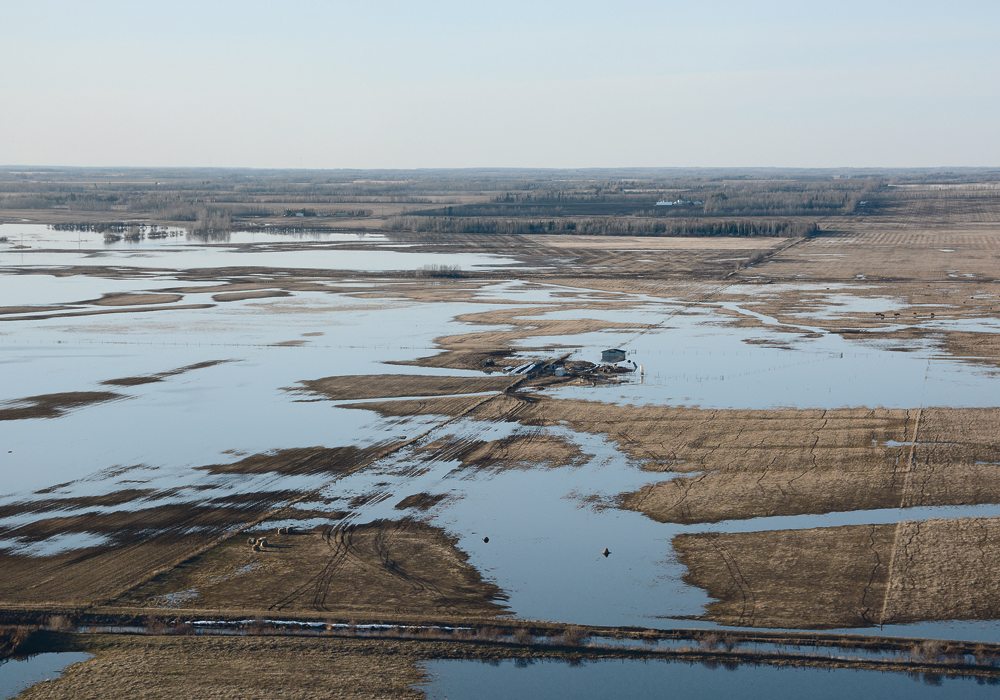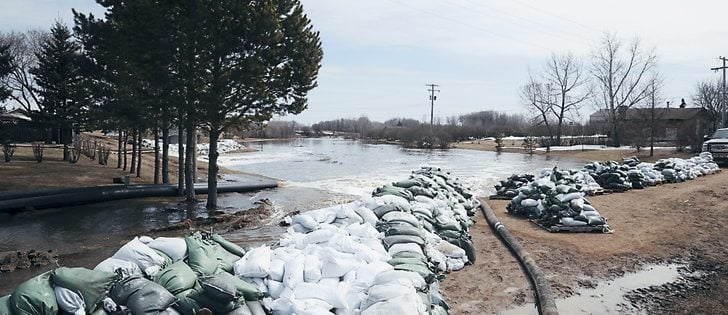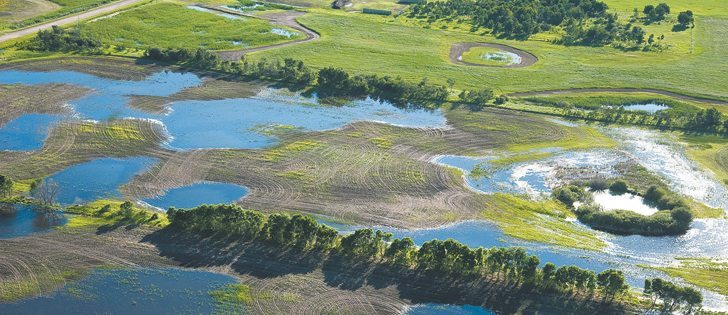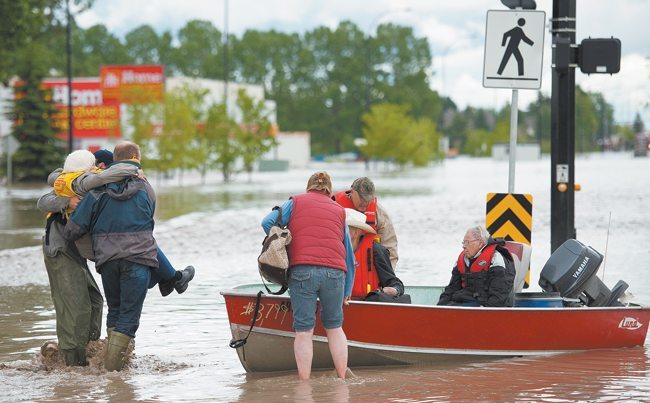I had no idea. Thursday in High River began with me preparing my lighting kit for a photo shoot later that day in Calgary. Four hours later, a front-end loader and then a boat took my wife and me to safety.
At about 7:30 a.m. my neighbour called to say there were flooding concerns and I might want to get my cameras out of there. But I think she phoned because she knows I’m a photographer always looking for pictures rather than as a warning.
Our street never had any water problems from flooding in either the 1995 and 2005 floods. My newspaper days had sent me to High River on flood detail during both of those floods.
Read Also

Proactive approach best bet with looming catastrophes
The Pan-Canadian Action Plan on African swine fever has been developed to avoid the worst case scenario — a total loss ofmarket access.
On Thursday morning, the first place I checked was the train bridge, a much-photographed flooding landmark. There were already people there watching trees and other debris pile up against the bridge. The river was as high as I had ever seen it but like everyone there, I hoped it had peaked and hopefully the ebb would begin shortly.
My friend Bruce was there so we travelled west to check on his daughter’s horse boarded at a nearby ranch. Along the way we helped shuttle a woman who was rescuing horses, then drove her truck back to her house. You know things are getting serious when someone asks a stranger to move their truck.
Bruce was able to see his daughter’s horse but there was no way we could get to it. She and three other horses were fetlock-deep in a pen surrounded by deep, fast moving water. We hoped she would go to higher ground.
By the time I drove Bruce back to his vehicle by the train bridge, the river was spilling over the banks and was flowing by his vehicle an inch below the door. He drove away from danger.
On High River’s main street people trying to stop the increasing volume of water from entering their places of business. It was futile because too much water appeared too fast.
I do some photography work for Reuters news agency so began shooting images of trucks stranded in the town’s water-filled main street, and a man falling face-first into the dirty water.
Then I went home where my place was still dry but not for long. Still my wife Katie and I hoped we’d be okay. I looked at my photos later and the time of each photo is recorded so at 11:08 a.m. I can say there were shallow two foot-wide streams of water coming down the street on each curb. By 12:17 it was surrounding the house and pouring into the basement.
I was in the back alley when I spotted my neighbour trying to cross the street which was now a river. She wanted to retrieve her dog but had to leave her vehicle a kilometre away. We loaded my vehicle with my neighbour and her dog and managed to get back to her vehicle but there were areas that were already too deep to pass through. We were lucky the engine didn’t drown out because there were vehicles floating by then. I dropped her off then tried to get back to the house but emergency crews wouldn’t allow that. I had to leave my vehicle and walk.
It was a good thing I was wearing my chest waders because the water was chest-high in places. I took photos along the way, including one of a woman in a truck that had started floating with her in it. I waded in to help. She managed to get a young boy, likely her son, out onto her back, then link arms with me to walk out to dry land. A man with a canoe carrying two older women had passed just prior to that. In the same area there was a man carrying a black lab through that same deep stretch of water.
My trek back to the house continued and when I arrived I knew we were in big trouble and would need to leave. The water was now an inch below the door of our car and we knew we would never be able to drive out with it so it was left.
Being a fisherman really helped because I own two pairs of waders. Katie put on the other pair and we headed out the back door and into the alley. It wasn’t long before a front-end loader carrying firefighters appeared to offer us a ride to dry land. They were a welcome sight and we’re thankful for them.
We headed for a dry area where they dropped us off. But we were surrounded by water and while my truck was parked there, I couldn’t use it. We had to wait for a boat to carry us to the next dry spot where we hoped to meet up with friends Bruce and Karen, who live in a dry area on the east side of town. It was a four-hour wait but not boring for me.
I photographed a helicopter carry a man who had been lifted off the roof of his vehicle. A combine was shuttling people from the Co-op grocery store to dry land. And there were boats, front-end loaders and massive dump trucks ferrying people.
I had to smile, and the other people around us smiled, when I noted a man guiding a motorboat past a partially submerged sign for a housing subdivision that proclaimed, “Live Your Dream.”
For the people of High River, it was more of a nightmare.
Cell phones were rendered useless and I’m sure everyone would like to know why this happens when people need them the most.
Standing near the local Co-op it was surreal. Motorboats were rescuing people where, a few hours earlier, shoppers drove to the store for groceries. A kind man in a boat picked us up and motored us east on 12th Ave. past submerged vehicles to dry land.
We walked near the fire hall where our friends Bruce and Karen were returning home after looking for us at an evacuation centre at the high school. What luck!
Their house was still okay but we knew we had to leave town because of the mandatory evacuation order. We decided to head 40 minutes southeast to Vulcan and share a motel room until we could return to our houses. I was able to access the Internet and send some pictures off to Reuters and the Western Producer.
We’re now into our third day in the motel.
During that time, we’ve had so many good friends call and text with offers of help. It’s truly appreciated. We don’t know when we will be able to return or what we’re going back to but like everyone else, we are hoping for the best.
There has been loss of life and there are people who have lost everything.
As a professional photographer, I’ve covered other catastrophes, including the devastating Slave Lake fire a few years ago, and many other floods. I’ve always admired the strength of the people involved, both the victims and the rescue workers. I saw that same kind of strength displayed many times over in High River.
It’s always surprised me that people in distress are so kind to photographers and other media, who aren’t really there to help them but to document their plight.
But now I am on the other side, and it puts things in a special perspective.
You can see more of Mike Sturk’s images in an album on the Western Producer’s Facebook page.
















